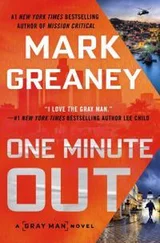“To the Director”: LCV.
Colonel Sergei Romanov: Romanov was commander of a special military unit responsible for storing and servicing nuclear weapons, known as a Podvizhnaya Remontno-Technicheskaya Baza (Mobile Repair-Technical Base), or PRTB. A PRTB was attached to each missile regiment, FKR regiment, motorized rifle regiment, or IL-28 squadron that operated nuclear warheads. Prior to arriving in Cuba, the warheads were under the control of an arsenal headed by Col. Nikolai Beloborodov, which reported to the original nuclear design bureaus. Once the warheads had arrived safely in Cuba and had been checked out, Beloborodov transferred formal control over them to the individual PRTBs, but shared responsibility for their proper maintenance.
A drive-through bunker: Cuba Activity Summary, 1963; CIA, Joint Evaluation of Soviet Missile Threat in Cuba, October 19, 1962, LBJ Library; NPIC memorandum, December 4, 1961, “Suspect Missile Sites in Cuba,” NPIC/B-49/61, CREST.
The general staff had drawn up: Malinovsky, “Instructions for Chiefs of Reconnaissance Groups,” July 4, 1962, LCV. See also Beloborodov memoirs in Gribkov et al., U Kraya Yadernoi Bezdni, 210.
The stress of handling: Romanov death certificate, January 30, 1963, inspected by Karlov.
His principal deputy: Yesin et al., Strategicheskaya Operatsiya Anadyr’, 196; author’s interview with Lt. Valentin Polkovnikov, who served in the same regiment as Boltenko.
Many of the technicians: Author’s interview with Vadim Galev, May 2006; letters from Dr. V. P. Nikolski and Engineer Kriukov, MAVI.
The next night, they feasted: Recollections of Dmitri Senko in Yesin et al., Strategicheskaya Operatsiya Anadyr’, 265.
Every precaution was taken: Gribkov et al., U Kraya Yadernoi Bezdni, 234-5.
“an unusual facility”: Marshall Carter briefing, White House meeting, October 16, 1962, JFK2, 430.
A more detailed CIA analysis: Joint Evaluation of Soviet Missile Threat in Cuba, October 19, 1962, LBJ Library.
Reconnaissance planes overflew: Photographic Interpretation Reports, CREST.
In hindsight: Dwayne Anderson, “On the Trail of the Alexandrovsk,” Studies in Intelligence (Winter 1966), 39-43, available through CREST.
in which he identified: See Brugioni, Eyeball to Eyeball, 546-8.
Soviet officers: See, e.g., Gribkov et al., U Kraya Yadernoi Bezdni, 209; Gribkov and Smith, Operation ANADYR, 46. In the latter, Gribkov incorrectly states that the Luna warheads were stored at Bejucal. According to Beloborodov, who was directly responsible for them, they were stored in Managua. The coordinates of the Bejucal bunker are 22deg56’18’’N, 82deg22’39’’W. The outlines of the bunker and circular road are still visible on Google Earth. The headquarters facility was half a mile south of the bunker, on the northeastern outskirts of Bejucal. The coordinates of the Managua complex (three bunkers) are 22deg58’00’’N, 82deg18’38W.
“The experts kept saying”: Author’s interview with Dino Brugioni, May 2007.
“a double security fence”: Joint Evaluation of Soviet Missile Threat in Cuba, October 19, 1962, CREST; Lundahl briefing of JFK, October 22, 1962.
The molasses factory: Brugioni, Eyeball to Eyeball, 542. The CIA later correctly concluded that Mariel was an important transit point for nuclear warheads entering and leaving Cuba, but paid little further attention to Bejucal.
“having a hard time”: USCONARC history, 154, NSAW.
The invasion plan was code-named: “Alternative Military Strikes,” JFKL; “Air Force Response to the Cuban Crisis,” 8, NSAW; Blight et al., Cuba on the Brink, 164. When Fidel Castro was informed about these plans at a conference in Havana in 1992, he misheard the number of air strikes as 119,000. He asked for the figure to be repeated, saying it seemed “a bit exaggerated.” Told that the number was actually a mere 1,190, he remarked dryly, “I’m more at ease now.”
Inevitably, with an operation: USCONARC history, 105, 130, 139, 143; Commanders’ conference, February 4, 1963, CNO Cuba, USNHC; Don Fulham interview.
“Soviet Bloc military technicians”: U.S. Marine Corps intelligence estimate, November 1962, JFKARC.
As word spread within the upper: See, e.g., CINCLANT message 311620Z, CNO Cuba, USNHC.
The distance from the pre-launch position: Chervonnaya interview with Sgt. Vitaly Roshva, senior aviation mechanic, FKR unit, May 2006. According to U.S. intelligence intercepts, the launch position in Filipinas was at 20deg0’46’’N, 75deg24’42’’W. The pre-launch position at Vilorio was at 20deg5’16’’N, 75deg19’22’’W.
Among the Soviet soldiers: Chervonnaya interview with Gennady Mikheev, brother of Viktor, plus family photographs and correspondence, April 2006.
Maltsev called for surgeons: The exchange was intercepted by U.S. intelligence, as reported by Seymour M. Hersh, “Was Castro Out of Control in 1962?” WP, October 11, 1987, H1. The article contains several inaccuracies, including speculation that Cuban troops attempted to storm a Soviet SAM site. This account relies on an interview with Roshva and GITMO intelligence reports.
“dress for dinner”: TV reports by Bjorn Ahlander, trans. by his son, Dag Sebastian Ahlander.
“While you are armed”: Transcript of broadcast, October 26, 1962, Robert Williams Collection, University of Michigan.
“In the event”: Carlos Alzuguray, “La crisis de octubre desde una perspectiva Cubana,” Conference in Mexico City, November 2002; Blight et al., Cuba on the Brink, 248.
Nobody “seemed to notice”: Halperin, 190.
“by far the worst day”: Sorensen OH, JFKL.
CHAPTER EIGHT: STRIKE FIRST
The decision had been taken for security reasons: See, e.g., October 26, ExComm debate, JFK3, 290.
The Cuban navy played a continuous: Author’s interview with Aubrey Brown, R Branch, USS Oxford, November 2005.
“diddy chasers”: Author’s interview with Keith Taylor, R Branch chief, November 2005.
On October 20, T-branchers: Ship logs, Oxford, NARA; author’s interview with Dale Thrasher, T Branch chief, November 2005; President’s Intelligence Check List, October 22, 1962, quoted in CIA Paper on Intelligence Relationship with JFK White House, 18, record no. 104-10302-100009, JFKARC. Information about the Oxford also supplied by George Cassidy, former T-brancher.
The radar systems at all three sites: NSA Cryptological Museum. The report does not mention the Oxford. Interviews with crew members and the ship logs make clear, however, that the Oxford was the source of the report.
The activation of the radar: “The 1962 Soviet Arms Buildup in Cuba,” 77, CREST; Memo from NSA assistant director John Davis, November 1, 1962, JFKL.
The Mars probe was off: Boris Chertok, Rakety i Lyudi: Goryachie Dni Kholodnoi Voini (Moscow: Mashinostroenie, 1999), chapter on Karibskii Raketnii Krizis. See also Ivan Evtreev, Esche Podnimalos’ Plamya (Moscow: Intervesy, 1997), 79-80, for reminiscences of a Soviet missile officer at Baikonur. The R-7s at Baikonur were brought to Readiness Condition 2, like the missiles in Cuba.
By Pentagon calculations: Kaufmann memo, Cuba and the Strategic Threat, OSD. The U.S. figure includes 144 ICBMs and 96 missiles based on Polaris submarines. The Soviet figures are from Karlov, the Strategic Rocket Forces historian, based on official Soviet data. The Soviet figure includes thirty-six R-16s and four R-7s, based at Plesetsk, plus the two reserve R-7s at Baikonur, which were not on permanent duty. The disparity in long-range bombers was even more pronounced, around 1-5 by most estimates. The CIA and State Department believed that the Soviet Union had sixty to seventy-five operational ICBM launchers, somewhat less than the Pentagon estimate, but still higher than the official Soviet figure cited by Karlov—Garthoff, 208.
Читать дальше












